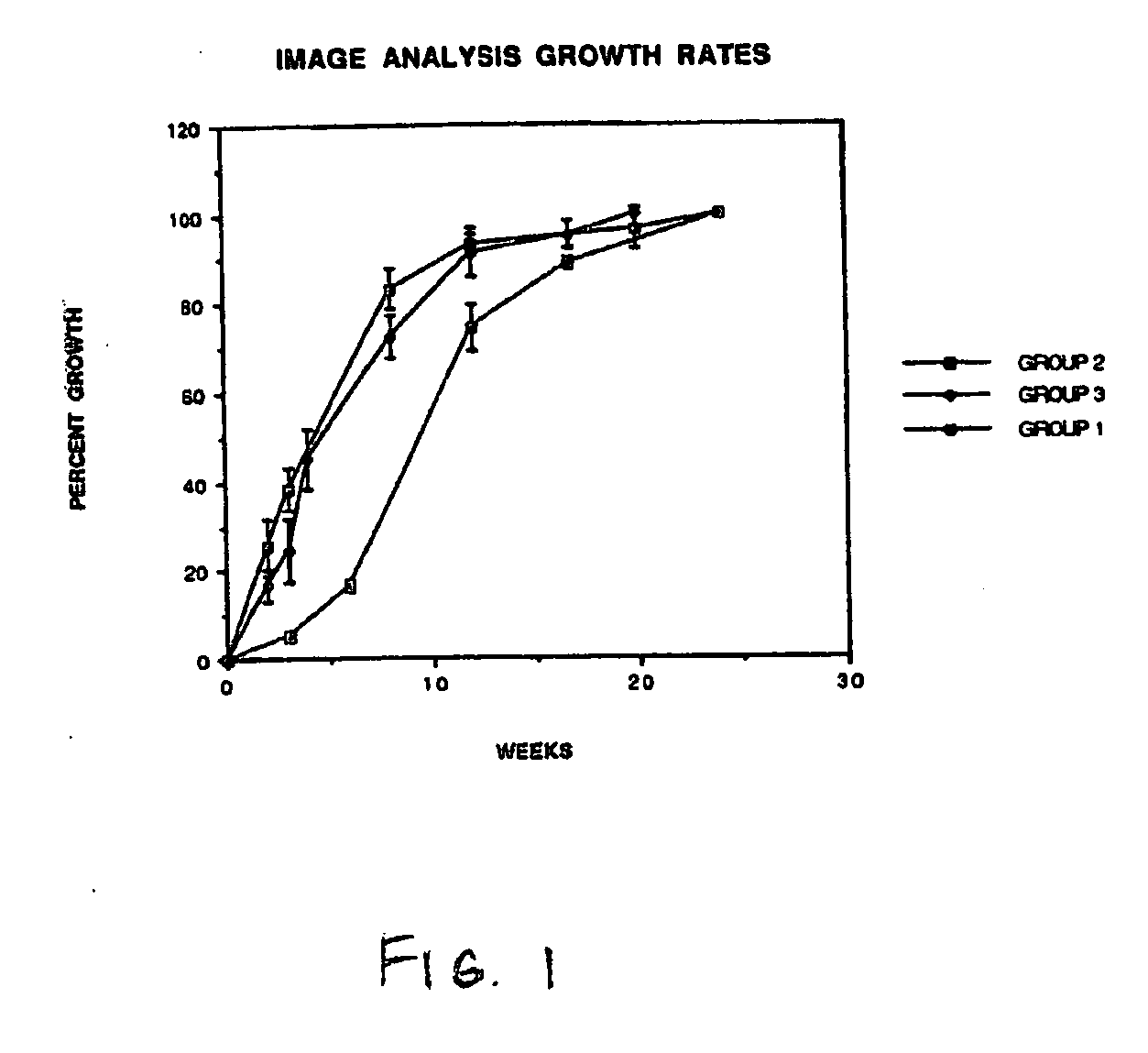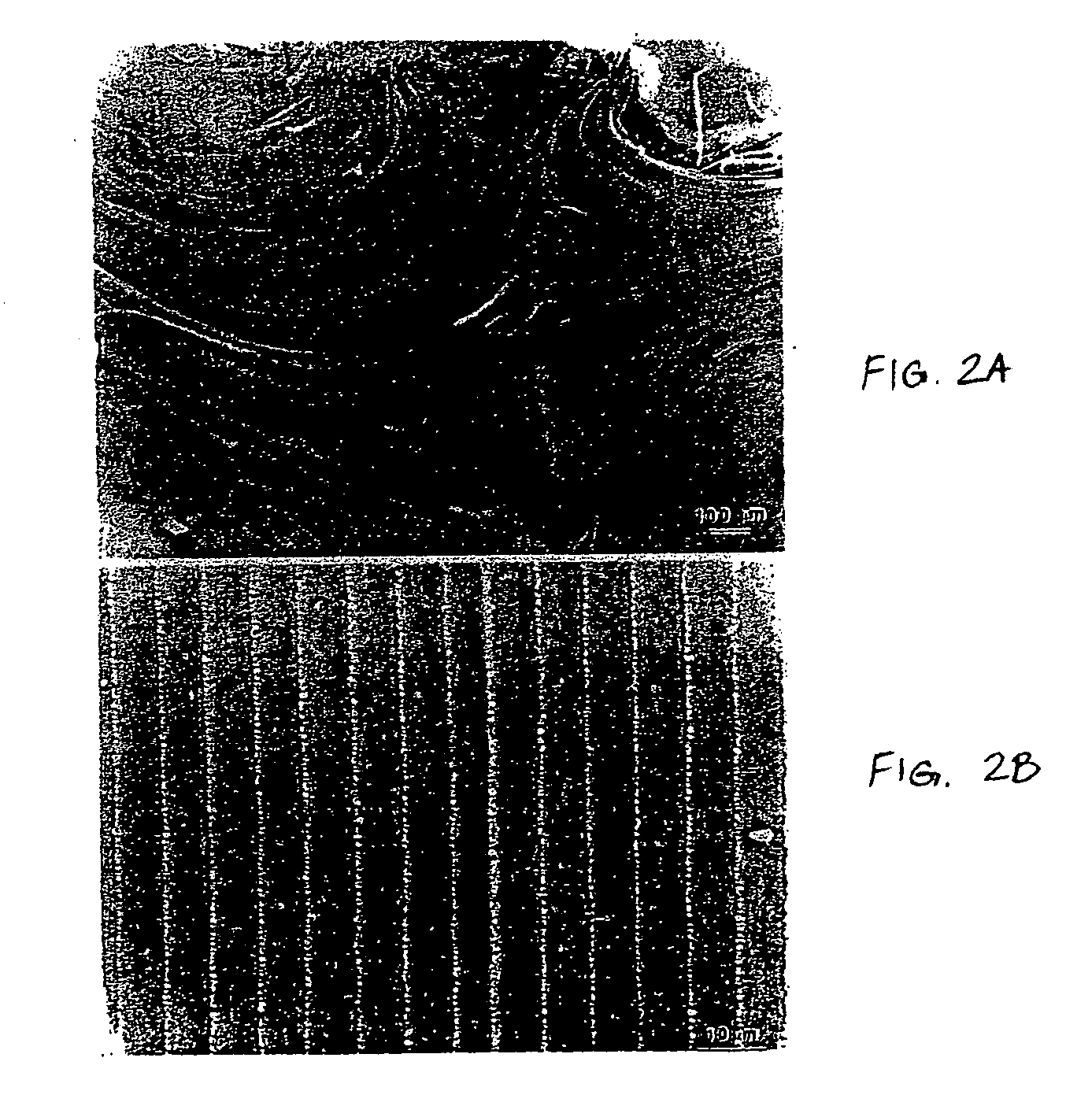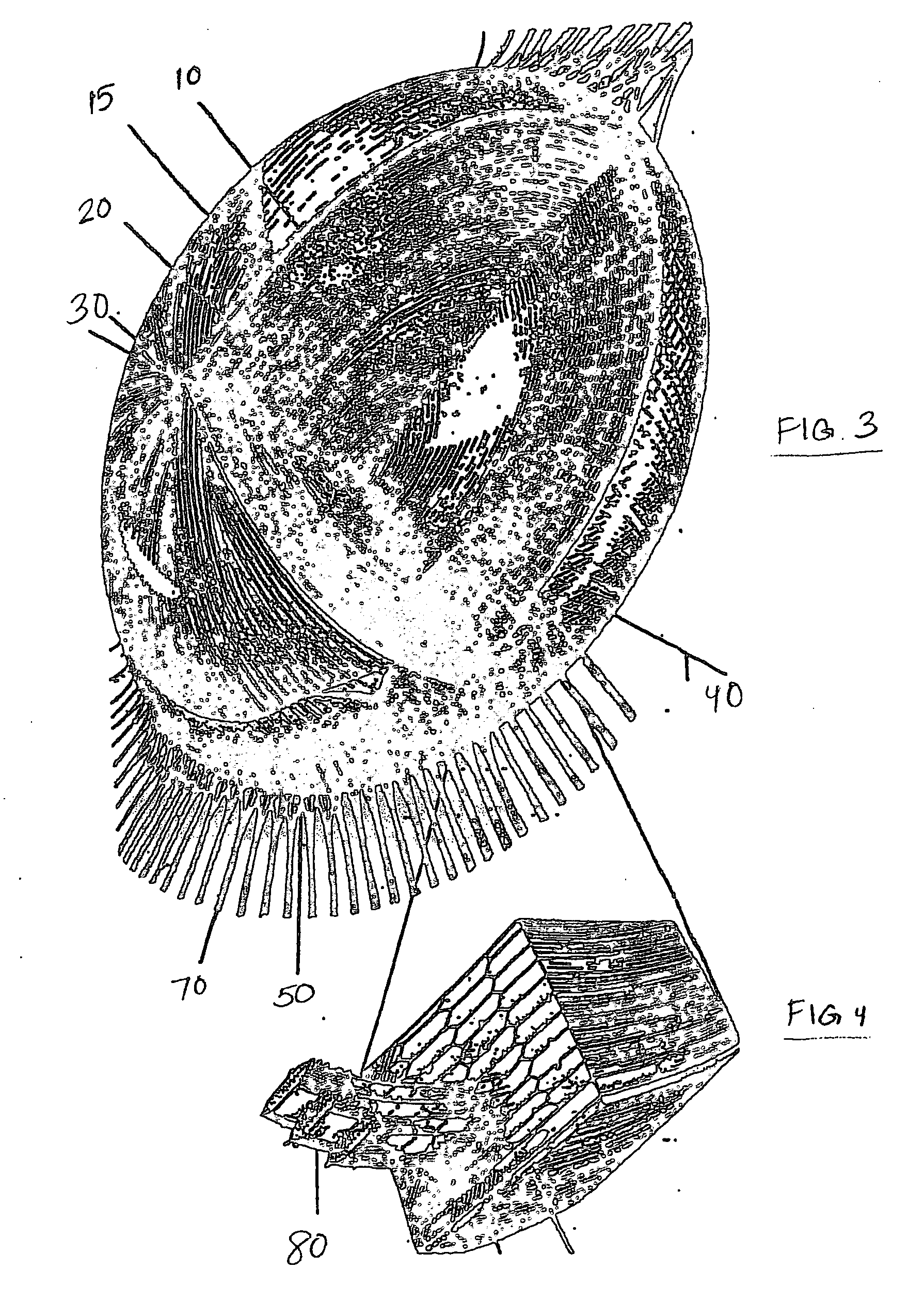Hyaluronic acid in the enhancement of lens regeneration
a technology of hyaluronic acid and lens regeneration, which is applied in the field of tissue engineered optical systems for ocular tissue regeneration, can solve problems such as less than ideal procedures
- Summary
- Abstract
- Description
- Claims
- Application Information
AI Technical Summary
Problems solved by technology
Method used
Image
Examples
example 1
Preparation of Animals
[0066] Endocapsular lens extraction by phacoemulsification and irrigation / aspiration of the lens through a 2-3 mm capsulorhexis was performed in rabbits. Following removal of the lens, a high viscosity hyaluronic acid was injected into the capsule bag, and a collagen patch was placed inside the capsulorhexis and brought up against the capsulotomy with an air bubble in the bag. The animals were followed postoperatively by slit lamp biomicroscopy. Following euthanasia, eyes were enucleated, paraffin embedded and H & E slides prepared for routine histology.
example 2
Insertion of Collagen Patch in Lens Capsule
[0067] The inventor restored the lens capsule integrity by inserting a collagen patch at the time of endocapsular lens extraction surgery to seal the anterior capsulotomy and to improve the shape and structure of the regenerated lenses. Lens regeneration was first noted as early as one to two weeks following surgery. Regenerated lens filled approximately 50% of the capsule bag at two weeks and 100% by five weeks. Subsequent growth was in the anterior-posterior direction. Lens thickness increased by 0.3 mm per month. The regenerated lenses were spherical with normal cortical structure and a nuclear opacity. Restoration of lens capsular integrity with a collagen patch following endocapsular lens extraction enhanced the shape, structure, and growth rate of the regenerated lenses. In addition, lens regeneration was shown to occur in two cats.
example 3
Filling of Capsule Bag with Air, Sodium Hyaluronate, or Perfluoropropane
[0068] After insertion of a collagen patch the inventor then filled the capsule bag with air, sodium hyaluronate (Healon® OVD), or perfluoropropane gas to prevent adhesions between the anterior and posterior capsules and to maintain capsule tautness and shape. Lens thickness measurements at one and two months represent the filled capsule bag containing lens regrowth as well as most probably a mixture of balanced salt solution (BSS), Healon® OVD, aqueous, and collagen degradation products and injured lens epithelial cells. From 4 to 12 months, lens thickness increased gradually but in progressively smaller increments.
[0069] The collagen patch occluded the anterior capsulotomy for up to two weeks before dissolution resulting in a linear scar at the capsulotomy site. The capsule bag was distended and maintained taut without surface wrinkles for one, five, and eight weeks in the Healon® OVD, air, and perfluoro-pro...
PUM
| Property | Measurement | Unit |
|---|---|---|
| Time | aaaaa | aaaaa |
| Time | aaaaa | aaaaa |
| Concentration | aaaaa | aaaaa |
Abstract
Description
Claims
Application Information
 Login to View More
Login to View More - R&D
- Intellectual Property
- Life Sciences
- Materials
- Tech Scout
- Unparalleled Data Quality
- Higher Quality Content
- 60% Fewer Hallucinations
Browse by: Latest US Patents, China's latest patents, Technical Efficacy Thesaurus, Application Domain, Technology Topic, Popular Technical Reports.
© 2025 PatSnap. All rights reserved.Legal|Privacy policy|Modern Slavery Act Transparency Statement|Sitemap|About US| Contact US: help@patsnap.com



